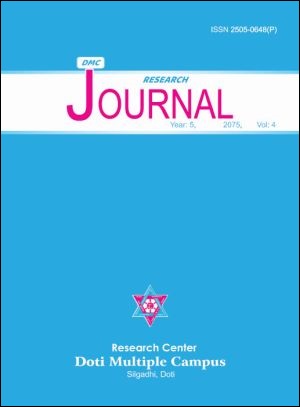Upanishadic Vision in T. S. Eliot's Poems and Plays
DOI:
https://doi.org/10.3126/dmcrj.v4i1.44226Keywords:
Upanishads, the Bhagavad Gita, Buddhism, Christianity, spiritualism, non-dualism, dualismAbstract
The objective of this paper is to explore how T. S. Eliot's writings reflect the vision of the Upanishads. This paper examines the extent to which his writings are similar to the philosophy of the Upanishads. His major poems and plays recall the ideas of the non-dualistic or monistic Vedic vision of the Upanishads. So far as one has a dualistic- bent of mind, he cannot be free from the cycle of death and rebirth, or pain and pleasure. Peace and bliss comes from the meditation of the Self within the heart. This article traces Eliot's personal quest for understanding the meaning of human existence and the spiritual essence of life.




